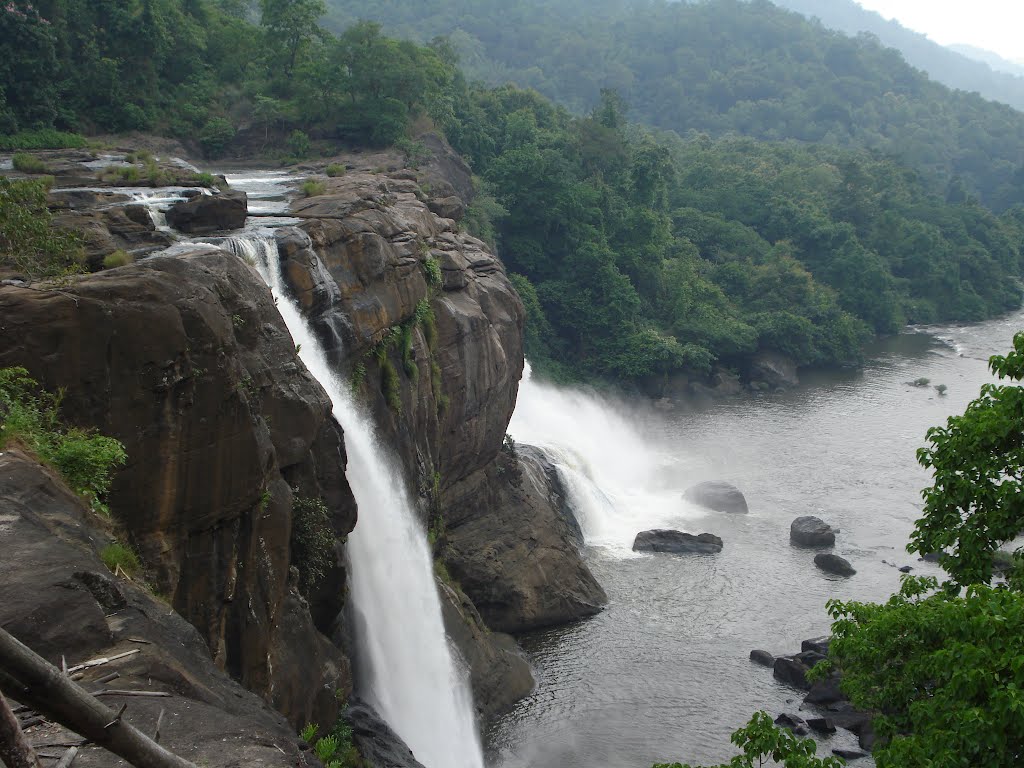Latha Anantha of the Chalakudy Puzha Samrakshana Samiti (Chalakudy River Protection Forum) was awarded the Bhagirath Prayas Samman at the recently concluded India Rivers Week for her commendable work on safeguarding the integrity of the Chalakudy river in Kerala. “She has combined sound research with the mobilization of community, political and state agencies, to usher in a unique methodology of consensus-based conservation of rivers in the country”, the citation said.
In the early 90s, Latha began working with the local communities of the Chalakudy river basin on areas related to forests and nature education. Later, she extended her work to river basin issues. In view of the vital role played by river basin systems and the complexities involved, Latha founded the River Research Center in 2006, to promote alternatives to benefit ecology and the poor. River Research Center focused on grassroot education and policy advocacy. Latha, along with activists like Unnikrishnan and Ravi, was instrumental in leading the anti-dam struggle in the river basin since the late 90s.
Her work focuses on furthering the concept of environmental flows, a term used to refer to the flow of a river, which is necessary to sustain freshwater species. It's not only the quantity of the flow that is significant but also the quality and timing. Latha found that the fluctuations in daily flow from the hydroelectric projects into the river had negative impacts on the freshwater species and through her work she advocates the need to reduce these fluctuations. She has also worked on grounding an approach to resolve water conflicts be it upstream-downstream issues or conflicts between various sectors that consume water like irrigation, power generation and domestic use.
Power generation or downstream needs?
Chalakudy is a 144 km long heavily dammed river that originates in the high altitude grasslands, and lush evergreen and semi-evergreen forests of the southern Western Ghats. The construction of the 7th dam proposed by the Kerala State Electricity Board’s (KSEB) in 1994 – the 163 MW Athirappilly hydroelectric project – across the river triggered a conflict in the river basin some years back. “This included a 23-metre high and 311-metre wide dam around 5 kms upstream of the picturesque falls in the Vazhachal Forest division in Thrissur. If this project is constructed, it will submerge an area of 138.8 hectares. Water from this reservoir will be diverted 7 km downstream through a 4.5 km long tunnel to a power house, located on the banks of a tributary of the main Chalakudy River” (1).

The dam, it was feared, would alter the river’s hydrological regime leading to high water stress in the downstream areas during the non-monsoon months. 10 lakh people in the 30-Gram Panchayats of the basin depend on its water. The proposed dam was designed as a peaking power station that would create a colossal daily flow fluctuation to the order of 1:17 through off-peak and peak hours in the summer months. The daily fluctuations were to harm the functioning of the Chalakudy River Diversion Scheme (CRDS), a major irrigation project that irrigated about 14,000 hectares of land. The drinking water schemes too were to be adversely affected. The semi-peaking operations of the present 8 MW Poringalkuthu Left Bank Hydroelectric Project (PLB-HEP) was already impacting the irrigation project unfavorably. The drying up of the river during summers meant that the hydel power project was dependent on the flows from the reservoir at such times.
Environmental clearance challenged
The River Research Center found out that the Athirappilly project was to have adverse social and ecological consequences. The local river communities were opposed to the project and got the support of the Gram Panchayats. “Through SANDRP, in 1998 itself, the group had made a submission to the World Commission on Dams opposing the Athirapally project” (2). In 2001, the Centre also filed a case in the Kerala High Court, challenging the environmental clearance granted to Athirappilly and got a favourable ruling with the High Court directing that a fresh public hearing be done.
In 2005, when the Athirapilly project managed to get backdoor clearance from MoEF, a young Kadar tribe woman and the Athirappilly Gram Panchayat President filed two separate PIL’s against it in the Kerala High Court. A public hearing was conducted based on the High Court directions, which saw a huge turnout of people. Latha was able to convince the former MoEF Minister and a stop Memo was issued by the Kerala State Electricity Board. The case is still pending in High Court.
The Gadgil (Western Ghats Expert Ecology) Panel has, in the meanwhile, noted that 70% of the Environmental Impact Assessment of this project was bogus since Athirappilly fell in Ecologically Sensitive Zone 1, a zone where no new dams based on large-scale storage should be permitted.
Conflict resolved
It is in this backdrop that the River Research Centre took upon itself the task of resolving the conflict between power generation and downstream needs. To make political buy-in easier it sought the active involvement of elected representatives during the process of consensus building. Latha felt that this would make it easier to carry forward decisions taken at the Chalakudy basin level to the district, state and national level.
The Chalakudy Puzha Samrakshana Samithi worked with groups like SANDRP and the Forum for Policy Dialogue for Water Conflicts to map the various uses of the river including ecosystem use and thereafter devise an effective reservoir management strategy to resolve the dam controversy. The Centre has since prepared a blueprint for revival and management of the Chalakudy River basin. It has also successfully involved children in campaigns for revival and protection of their river.
The non-violent struggle and Latha’s passion for rivers continues.
References
(1) Athirapilly falls under threat
(2) Parineeta Dandekar, SANDRP













